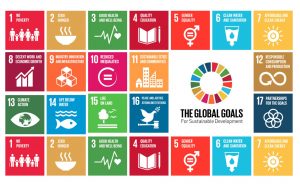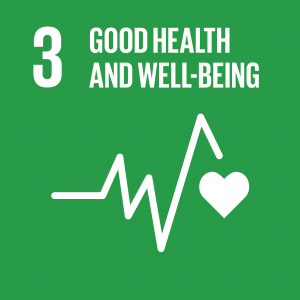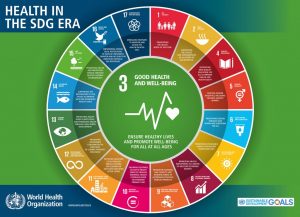Facts and Figures on HIV/AIDS, malaria, and other diseases – In 2019, globally, 38 million people were reportedly living with HIV, with only 25.4 million people accessing antiretroviral therapy, while 1.7 million people became newly infected with HIV and 690000 people died from AIDS-related illnesses. Since the start of the epidemic, 75.7 million people have become infected with HIV and 32.7 million people have died from AIDS-related illnesses. Tuberculosis has remained the leading cause of death among people living with HIV, accounting for approximately one-third of AIDS-related deaths. HIV is the leading cause of death for women of reproductive age worldwide, which is partly because adolescent girls and young women face gender-based inequalities, exclusion, discrimination, and violence, which put them at increased risk of acquiring HIV and AIDS is now the leading cause of death among adolescents (aged 10–19) in Africa and the second most common cause of death among adolescents globally.

The Sustainable Development Goals (SDGs) also referred to as the “Global Goals” are a collection of 17 interlinked goals designed to be a “blueprint to achieve a better and more sustainable future for all” (United Nations, 2017). The SDGs were set in 2015 by the United Nations (UN) General Assembly and are intended to be achieved by the year 2030. Hence, the part of the UN Resolution called the 2030 Agenda or conversationally known as “Agenda 2030” (UN, 2015). The seventeen (17) SDGs are: (1) No Poverty, (2) Zero Hunger, (3) Good Health and Well-being, (4) Quality Education, (5) Gender Equality, (6) Clean Water and Sanitation, (7) Affordable and Clean Energy, (8) Decent Work and Economic Growth, (9) Industry, Innovation and Infrastructure, (10) Reducing Inequality, (11) Sustainable Cities and Communities, (12) Responsible Consumption and Production, (13) Climate Action, (14) Life Below Water, (15) Life On Land, (16) Peace, Justice, and Strong Institutions, (17) Partnerships for the Goals.
SDG 3 aspires to make sure health and well-being for all, as well as a daring commitment to finish the epidemics of HIV/AIDS, TB, protozoal infection and other communicable diseases by 2030. It conjointly aims to attain universal health coverage, and supply access to safe and effective medicines with vaccines for all. Both methods of supporting analysis and development for vaccines and increasing access to reasonable medicines are similarly as important. Therefore, an integrated approach is crucial for Promoting health and well-being of all among the seventeen global Goals to be achieved by 2030 Agenda for sustainable Development and progress across the multiple goals.
Facts and Figures on Maternal health – Over 40% of all countries have fewer than 10 medical doctors per 10,000 people while over 55% of countries have fewer than 40 nursing and midwifery personnel per 10,000 people. Despite the noted decline in maternal mortality by around two-thirds in Eastern Asia, Northern Africa, and Southern Asia, every day in 2017, approximately 810 women died from preventable causes related to pregnancy and childbirth while 94% of all these maternal deaths occurred in the low and lower-middle-income countries. Furthermore in synchrony, the maternal mortality ratio (i.e. proportion of mothers that do not survive childbirth compared to those who do) in developing regions is still 14 times higher than in the developed regions with younger adolescents (ages 10-14) having a higher risk of complications and death as a result of pregnancy than other women.

The SDG 3 TARGETS by 2030 include;
3.1 – Reduction of the global maternal mortality ratio to less than 70 per 100 000 live births.
3.2 – Ending preventable deaths of newborns and children under 5 years of age, with all countries aiming to reduce neonatal mortality to at least as low as 12 per 1,000 live births and under-5 mortality to at least as low as 25 per 1000 live births.
3.3 – Ending the epidemics of AIDS, tuberculosis, malaria and neglected tropical diseases and combat hepatitis, water-borne diseases and other communicable diseases.
3.4 – Reduction by one-third premature mortality from non-communicable diseases through prevention and treatment and promote mental health and well-being.
3.5 – Strengthen the prevention and treatment of substance abuse, including narcotic drug abuse and harmful use of alcohol.
3.6 – Halving the number of global deaths and injuries from road traffic accidents.
3.7 – Ensuring universal access to sexual and reproductive health-care services, including for family planning, information and education, and the integration of reproductive health into national strategies and programmes.
3.8 – Achieving universal health coverage, including financial risk protection, access to quality essential health-care services, and access to safe, effective, quality, and affordable essential medicines and vaccines for all.
3.9 Substantially reducing the number of deaths and illnesses from hazardous chemicals and air, water, and soil pollution and contamination.
These targets are meant to be achieved by;
3.A Strengthening the implementation of the WHO Framework Convention on Tobacco Control in all countries, as appropriate.
3.B Supporting the research and development of vaccines and medicines for the communicable and non-communicable diseases that primarily affect developing countries, provide access to affordable essential medicines and vaccines, in accordance with the Doha Declaration on the TRIPS Agreement and Public Health, which affirms the right of developing countries to use to the full the provisions in the Agreement on Trade-Related Aspects of Intellectual Property Rights regarding flexibilities to protect public health, and, in particular, provide access to medicines for all.
3.C Substantially increasing health financing and the recruitment, development, training, and retention of the health workforce in developing countries, especially in the least developed countries and small island developing States.
3.D Strengthening the capacity of all countries, in particular developing countries, for early warning, risk reduction, and management of national and global health risks.
In relation to other SDGs, SDG 3 is interwoven throughout the 2030 Agenda, with its targets directly linking to targets in other goals. Among these are targets of SDG 2; 2.2 (end all forms of malnutrition), SDG 4; 4.1 (free, equitable, and good-quality secondary education), 4.2 (good-quality early childhood development), 4.7 (knowledge and skills for sustainable development), SDG 5; 5.2 (eliminate all forms of violence against women and girls in the public and private spheres), 5.3 (eliminate all harmful practices, including female genital mutilation), 5.6 (universal access to sexual and reproductive health and reproductive rights), SDG 6; 6.1(access to drinking water), 6.2 (access to sanitation), SDG 7; 7.1 (access to modern energy services), SDG 9; 9.5 (enhance scientific research /increase number of R&D workers), SDG 11; 11.6 (air quality and municipal waste), SDG 13; 13.1 (resilience to natural disasters), and SDG 16; 16.1 (reduce violence and related death rates).
Facts and Figures on Child health – In 2018, an estimated 6.2 million children and adolescents under the age of 15 years died, mostly from preventable causes. Of these deaths, 5.3 million occurred in the first 5 years, with almost half of these in the first month of life. Despite reported global progress, an increasing proportion of child deaths happen in Sub-Saharan Africa and Southern Asia, of which four of every five deaths of children under the age of five occur in these regions with children in sub-Saharan Africa > 15 times more likely to die before the age of 5 than children in high-income countries. This could be attributed to the number of Malnourished children in these regions, as Nutrition-related factors contribute to about 45% of this under-5 children mortality, particularly those with severe acute malnutrition, who have a higher risk of death from common childhood illnesses such as diarrhoea, pneumonia, and malaria.

The COVID-19 pandemic in 2020 could be a serious threat to the achievement and progress of SDG three aimed to make sure healthy lives and well-being for all. This pandemic which unfolded globally had over seventy countries incapacitated and put on hold varied health services like children vaccination, family planning, cancer screening, etc. therefore, the many thousands additional under 5 fatalities ought to be expected. The pandemic also led to the overloading and overcrowding of health facilities with many people becoming afraid of visiting these centers for fear of being infected. Largely, most non-COVID-19 diseases have been either neglected or interrupted and healthcare systems are in turn stretched beyond their capacity and capabilities to provide adequate care. This is a great reverse in decades of improvement and has reiterated the need for governments to prioritize issues of healthy living and well-being and work towards the goal of SDG 3. Lessons can be taken from this pandemic crisis to tackle the inherent healthcare worker’s shortage for government of various countries, build up resilience to combat future health pandemics and achieve progress towards Universal Health Coverage.
In Nigeria today, the achievement of these global goals especially the SDG 3 has been slowly paced with poor health outcomes, such as prevalently high maternal mortality rates. Reportedly, there have been improvements in the under-five mortality rates (from 157 to 132), albeit, with an upward movement on the list of countries currently still with the highest rate of under-five mortality. The onset of COVID-19 challenged our public health system and a key lesson in protecting the public in times of such pandemics is hygiene and the need to prioritize universal access to clean water and soap. However, Nigeria’s current access to basic drinking water stands at 64%, hence, there must be more investment in public health and to ensure the most vulnerable are reached through universal access to essential services.
Organizations dedicated to achieving the SDG 3 include but not limited to; The Global Fund to Fight AIDS, Joint United Nations Program on HIV/AIDS (UNAIDS), World Bank, World Health Organization (WHO), UNICEF, Department of Economic and Social Affairs (DESA), United Nations Office on Drugs and Crime (UNODC), Organisation for Economic Co-operation and Development (OECD), UN Women, Gavi the Vaccine Alliance, Safer Hands Health Initiative amongst others.
About Author:
Nofisat Bukola Akinremi (BSc. Microbiology, MSc. Ecotourism) is a medical microbiologist and passionate advocate for SDGs, ecology and biodiversity.
REFERENCES
https://en.wikipedia.org/wiki/Sustainable_Development_Goals
https://www.who.int/health-topics/sustainable-development-goals
https://sdgs.un.org/goals
https://www.un.org/sustainabledevelopment/health/
United Nations (2017) Resolution adopted by the General Assembly on 6 July 2017, Work of the Statistical Commission pertaining to the 2030 Agenda for Sustainable Development (A/RES/71/313)
United Nations (2015) Resolution adopted by the General Assembly on 25 September 2015, Transforming our world: the 2030 Agenda for Sustainable Development (A/RES/70/1)




Discussion1 Comment
Pingback: ACSHR 2024: Linking, Learning and Acting towards Advancing the Sexual and Reproductive Health Rights of Women and Young People in Africa